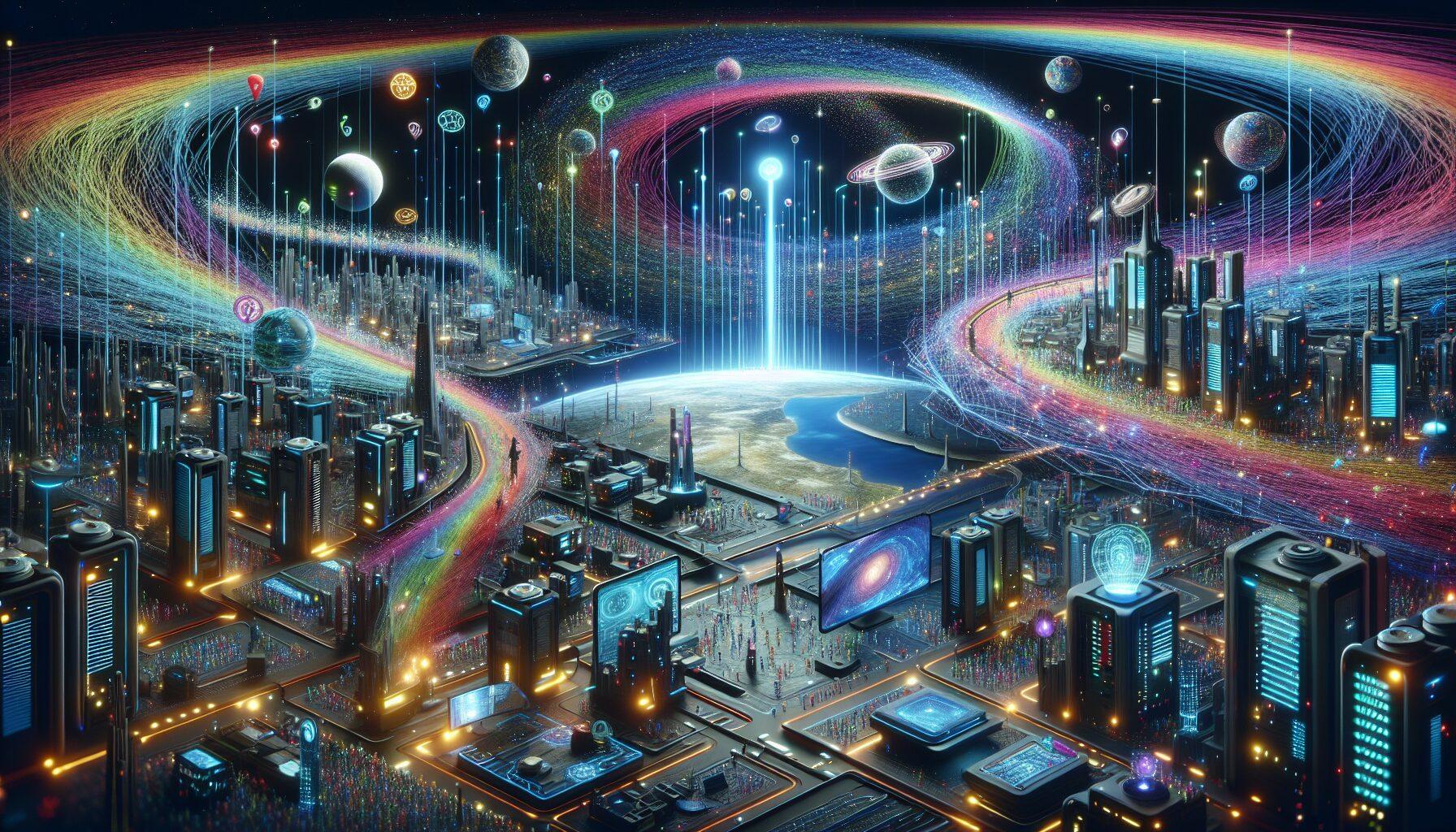Advanced Infrastructure and Technology in the Metaverse: Building the Future
Introduction
The metaverse, a convergence of digital and augmented realities, is quickly reworking from a conceptual imaginative and prescient right into a palpable digital universe. At the coronary heart of this transformation lies the intricate internet of metaverse infrastructure and know-how. This article delves into the superior elements driving the metaverse, providing readers a complete information to understanding its foundations, technological improvements and future potential.
Advanced Infrastructure and Technology in the Metaverse: Building the FutureThe Core Elements of Metaverse Infrastructure
1. Blockchain Technology
Blockchain serves as the spine of the metaverse, offering a decentralized and secure atmosphere for transactions and knowledge storage. It allows:
- Digital Ownership: Through non-fungible tokens (NFTs), customers can personal distinctive digital property.
- Interoperability: Blockchain allows different virtual worlds to work together seamlessly.
- Security: Enhanced security features protect user data and digital assets from breaches.
2. Cloud Computing
Cloud computing affords the computational energy required to assist the expansive and resource-intensive virtual worlds within the metaverse. Key advantages embrace:
- Scalability: Cloud platforms can scale assets up or down based mostly on demand.
- Accessibility: Users can access the metaverse from varied units with out the want for high-end {hardware}.
- Cost Efficiency: Reduces the want for large investments in bodily infrastructure.
3. 5G and Beyond
High-speed internet connectivity is crucial for an immersive metaverse experience. 5G technology supplies:
- Low Latency: Ensures real-time interactions and reduces lag.
- High Bandwidth: Supports seamless streaming of high-definition content.
- Enhanced Connectivity: Facilitates the integration of quite a few IoT devices inside the metaverse.
4. Artificial Intelligence (AI)
AI performs a pivotal function in creating clever and responsive digital environments. Its purposes embrace:
- Virtual Assistants: AI-driven avatars that help customers in navigating the metaverse.
- Content Generation: Automated creation of virtual landscapes and assets.
- Behavioral Analytics: Understanding and predicting consumer behavior to enhance experiences.
Innovative Technologies Shaping the Metaverse
1. Virtual Reality (VR) and Augmented Reality (AR)
VR and AR applied sciences are the gateways to the metaverse, providing immersive experiences that blend the digital and physical worlds. Innovations in this house embrace:
- Haptic Feedback: Devices that simulate contact and really feel, enhancing realism.
- Spatial Audio: 3D soundscapes that match the digital atmosphere.
- Advanced Headsets: Lightweight and high-resolution VR/AR headsets for extended use.
2. Digital Twins
Digital twins are virtual replicas of bodily entities, offering real-time knowledge and analytics. In the metaverse, they:
- Enhance Simulation: Allow for testing and optimization of virtual models.
- Improve Interactivity: Enable customers to work together with digital counterparts of real-world objects.
3. Spatial Computing
Spatial computing integrates bodily and digital areas, enabling customers to work together naturally with the metaverse. Key elements embrace:
- Gesture Recognition: Allows customers to regulate digital components by means of bodily gestures.
- Environment Mapping: Creates correct digital fashions of real-world areas.
The Future of Metaverse Infrastructure and Technology
1. Interoperability Standards
Developing common requirements for interoperability shall be essential for a cohesive metaverse. This contains:
- Cross-Platform Integration: Ensuring seamless transitions between completely different digital worlds.
- Unified Protocols: Standardizing communication and knowledge alternate protocols.
2. Ethical and Legal Considerations
As the metaverse evolves, addressing moral and authorized points shall be paramount. Focus areas embrace:
- Data Privacy: Implementing robust measures to protect user data.
- Digital Rights: Defining and imposing digital ownership and intellectual property rights.
3. Sustainable Development
Building a sustainable metaverse entails:
- Energy Efficiency: Developing low-energy applied sciences to scale back the carbon footprint.
- Eco-friendly Practices: Promoting environmentally accountable development practices.
Conclusion
The metaverse represents the next frontier in digital innovation, with its infrastructure and know-how laying the groundwork for an interconnected digital universe. By harnessing the power of blockchain, cloud computing, 5G and AI, the metaverse is poised to revolutionize how we work together, work and play. As we navigate this digital transformation, continued developments and moral concerns shall be pivotal in shaping a vibrant and inclusive metaverse for all.
Originally posted 2024-10-13 15:18:07.
